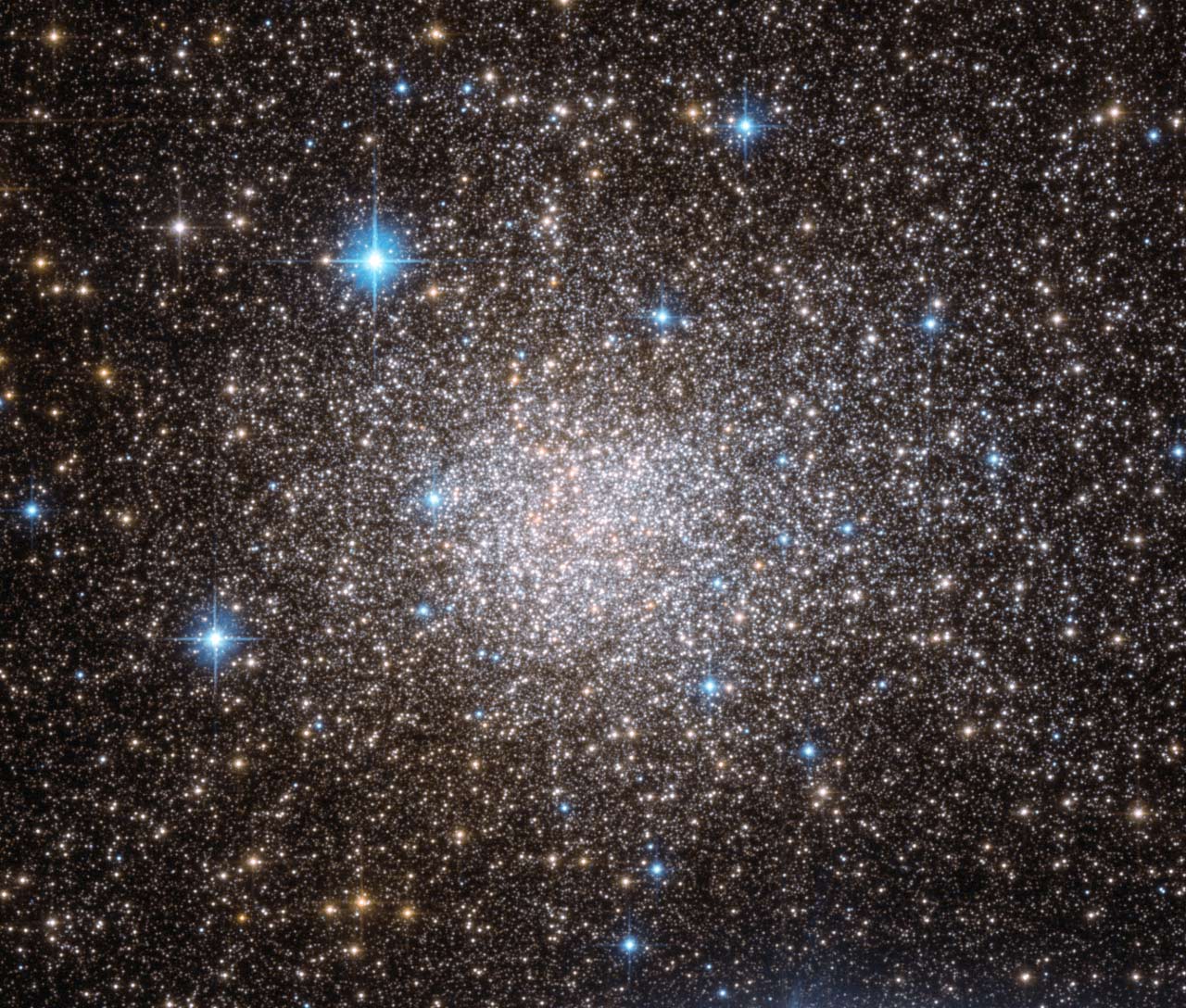
Star clusters are fascinating celestial formations that captivate astronomers and stargazers alike. They are clumps of stars that are held together by their mutual gravitational attraction, forming stunning visuals in the night sky. Among the many types of star clusters, binary systems stand out as particularly intriguing. These systems consist of two stars orbiting around a common center of mass, and they offer a wealth of intriguing phenomena and scientific discoveries.
In this article, we will delve into the mesmerizing world of star cluster binary systems and unravel 19 astonishing facts about them. From their formation and dynamics to their varying sizes and configurations, we will explore the wonders that these systems present. So, prepare to be awed as we embark on a cosmic journey through the intricacies of star cluster binary systems.
Key Takeaways:
- Binary star systems are like celestial dance partners, with two or more stars twirling around each other in the night sky, creating stunning visual displays and adding to the beauty of the universe.
- These star cluster binary systems are like cosmic laboratories, providing astronomers with valuable insights into the evolution of stars, the dynamics of galaxies, and the potential for discovering habitable planets in the cosmos.
Star cluster binary systems consist of two or more stars
In star cluster binary systems, two or more stars are bound together by their mutual gravitational attraction. These stars orbit around a common center of mass, creating a stunning celestial dance.
Binary systems are more common in star clusters
Star cluster binary systems are more prevalent within star clusters than in isolation. The tight gravitational interactions in clusters often lead to the formation of binary systems.
The majority of stars in the Milky Way are part of binary systems
Binary systems are incredibly common within our own galaxy, the Milky Way. It is estimated that more than half of the stars in the Milky Way exist in binary or multiple star systems.
Binary stars can have different spectral types
In a binary system, the two stars can have different spectral types. This means that they can vary in temperature, size, and color, creating a beautiful contrast when observed.
The distance between binary stars can range from close to far apart
In some binary systems, the distance between the stars is relatively close, allowing them to orbit each other in a tight embrace. In other cases, the stars are much farther apart, resulting in a more expansive dance.
Binary star systems can have different orbit shapes
The orbit shape of binary star systems can vary. Some binary stars have circular orbits, while others have elliptical or even highly eccentric orbits, adding complexity to their movements.
Binary systems can undergo mass transfer
In certain binary systems, mass transfer can occur between the stars. This means that one star can transfer mass to its companion, resulting in changes in their physical properties.
Some binary systems can merge into a single star
In rare cases, binary systems can undergo a process called stellar merger, where the two stars merge to form a single, more massive star. This phenomenon can generate significant amounts of energy and can have a profound impact on the star’s evolution.
Binary stars can exhibit eclipses
For binary systems that are perfectly aligned with the observer, eclipses can occur. During an eclipse, one star can pass in front of the other, temporarily blocking its light and causing a drop in observed brightness.
Some binary systems produce exotic phenomena
Binary systems can give rise to various fascinating phenomena, such as X-ray binaries, where one of the stars is a compact object, like a neutron star or a black hole, attracting and accreting matter from its companion.
Binary systems can have long orbital periods
While some binary systems complete their orbits quickly, others have very long orbital periods spanning thousands or even millions of years. These slow dances in the cosmos can span generations.
Stellar collisions can occur in binary systems
In some cases, the tight interaction between stars in a binary system can lead to stellar collisions. These cataclysmic events can result in violent explosions and the creation of new, more massive stars.
Binary systems can be used to measure stellar masses
Binary systems provide a unique opportunity to measure stellar masses accurately. By studying the orbital dynamics and the periodic changes in brightness, astronomers can deduce the masses of individual stars.
Some binary systems have planets orbiting around them
In recent years, astronomers have discovered binary star systems with planets orbiting around both stars. These planetary systems present intriguing dynamics and potential habitable zones.
Binary systems can influence the evolution of galaxies
The presence of binary systems can significantly impact the dynamics and evolution of galaxies. Their gravitational interactions can shape the distribution of stars and trigger important stellar phenomena.
Binary systems can serve as natural laboratories for studying stellar evolution
Studying binary systems provides invaluable insights into stellar evolution. The interactions and exchanges of mass between the stars offer a unique opportunity to understand the intricacies of stellar life cycles.
Binary systems can have multiple components
In some binary systems, there can be more than two stars gravitationally bound together. These multiple star systems can consist of three or more stars, creating intricate celestial configurations.
Binary systems can exhibit variability in their brightness
Due to the complex dynamics and interactions, binary systems can display variability in their observed brightness. This variability can be periodic or irregular, providing valuable data for astronomers studying stellar systems.
Binary systems contribute to the beauty of the night sky
The presence of binary systems adds to the stunning visual display of the night sky. Watching two stars dance together, whether they are close or far apart, reminds us of the vastness and wonders of the universe.
Conclusion
In conclusion, star cluster binary systems are fascinating celestial phenomena that offer extraordinary insights into the formation and evolution of galaxies. The astonishing facts surrounding these systems highlight the intricate dance between stars and the complex dynamics within clusters. From the discovery of binary systems within star clusters to the role they play in understanding stellar evolution, these facts shed new light on the mysteries of the universe.
Studying star cluster binary systems not only provides valuable data for astronomers but also deepens our understanding of how galaxies, including our own Milky Way, formed and continue to evolve. As we uncover more about these binary systems, we gain invaluable knowledge about the processes that shape the vast expanse of the universe.
From the mind-boggling distances between stars within a cluster to the interaction of binary pairs, star cluster binary systems offer a captivating realm for exploration. The more we delve into their complexities, the more we unravel the secrets of the cosmos, making these systems an area of ongoing fascination and study for scientists and enthusiasts alike.
FAQs
Q: What is a star cluster binary system?
A star cluster binary system is a celestial arrangement where two stars orbit around a common center of mass within a star cluster. These systems provide invaluable insights into stellar formation and the dynamics of star clusters.
Q: How are star cluster binary systems formed?
Star cluster binary systems are believed to be formed through a variety of processes. They can be created during the collapse of molecular clouds that give birth to star clusters or through interactions between stars within a cluster, such as tidal interactions or gravitational encounters.
Q: What is the significance of studying star cluster binary systems?
Studying star cluster binary systems helps us understand the complex interactions between stars and the dynamic processes within star clusters. It provides insights into stellar evolution, binary star formation, and the role star clusters play in shaping galaxies.
Q: How do astronomers detect star cluster binary systems?
Astronomers detect star cluster binary systems through various methods. These include observing variations in the brightness of the stars as they orbit each other, analyzing the gravitational effects in the cluster, and studying the spectral characteristics of the stars.
Q: Can star cluster binary systems be found outside our galaxy?
Yes, star cluster binary systems can be found in galaxies beyond our own Milky Way. Observations have revealed these systems in other nearby galaxies such as the Andromeda Galaxy (M31) and the Triangulum Galaxy (M33).
Embark on a celestial journey through astronomyastronomyastronomy, where binary starsbinary stars</binary stars> dance in cosmic harmony and star clustersstar clusters</star clusters> dazzle with their breathtaking beauty. Unravel enigmatic facts about binary systems, marvel at surprising revelations about star clusters, and let your curiosity soar as you explore the wonders of our universe. Each astounding discovery will leave you yearning for more, as you navigate the depths of space and time. Prepare to be captivated by the secrets that await you in these stellar articles.
Was this page helpful?
Our commitment to delivering trustworthy and engaging content is at the heart of what we do. Each fact on our site is contributed by real users like you, bringing a wealth of diverse insights and information. To ensure the highest standards of accuracy and reliability, our dedicated editors meticulously review each submission. This process guarantees that the facts we share are not only fascinating but also credible. Trust in our commitment to quality and authenticity as you explore and learn with us.


